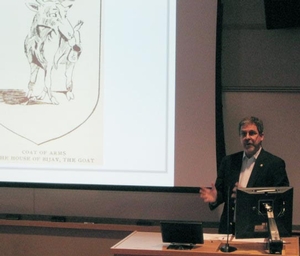Goats in war: Scholar and Washinton Times journalist speaks about "goats" in Civil War
Yes, it does seem strange, but some of the best soldiers during the American Civil War were goats. No, not the goats one finds on a farm – but rather those special few who graduated last in their class at West Point Military Academy. Dr. James S. Robbins, senior editorial writer for foreign effairs at the Washington Times, as well as a senior fellow in national security affairs at the American Foreign Policy Council, was recently invited to campus by the Alexander Hamilton Institute and Libertas Americana Project to discuss his book entitled Last in Their Class: Custer, Pickett and the Goats of West Point. Robbins told students and faculty about how a leisurely visit to Gettysburg National Military Park motivated him to collect research about the importance during the Civil War of those soldiers who were given the “goat” label. “I originally collected these stories as a hobby,” claimed Robbins, but after an offer for a book deal, his hobby soon became published literature.
Throughout his discussion, the relatively insipid concept of the “goat” came to life as Robbins revealed many fascinating traits of these soldiers, like how many of them tended to be physically brave and take risks. George Armstrong Custer, for example, is known as the “goat of 1861,” but he rose to military fame during the Civil War and is widely considered one of the best U.S. generals ever, despite his campaign in Little Big Horn. Robbins was quick to point out that “graduating last during this time meant you were a survivor, since more than half of each incoming class dropped out before graduation.” After the lecture, Robbins ended his visit by dining with faculty and students at the Alexander Hamilton Institute where he signed copies of his book.

